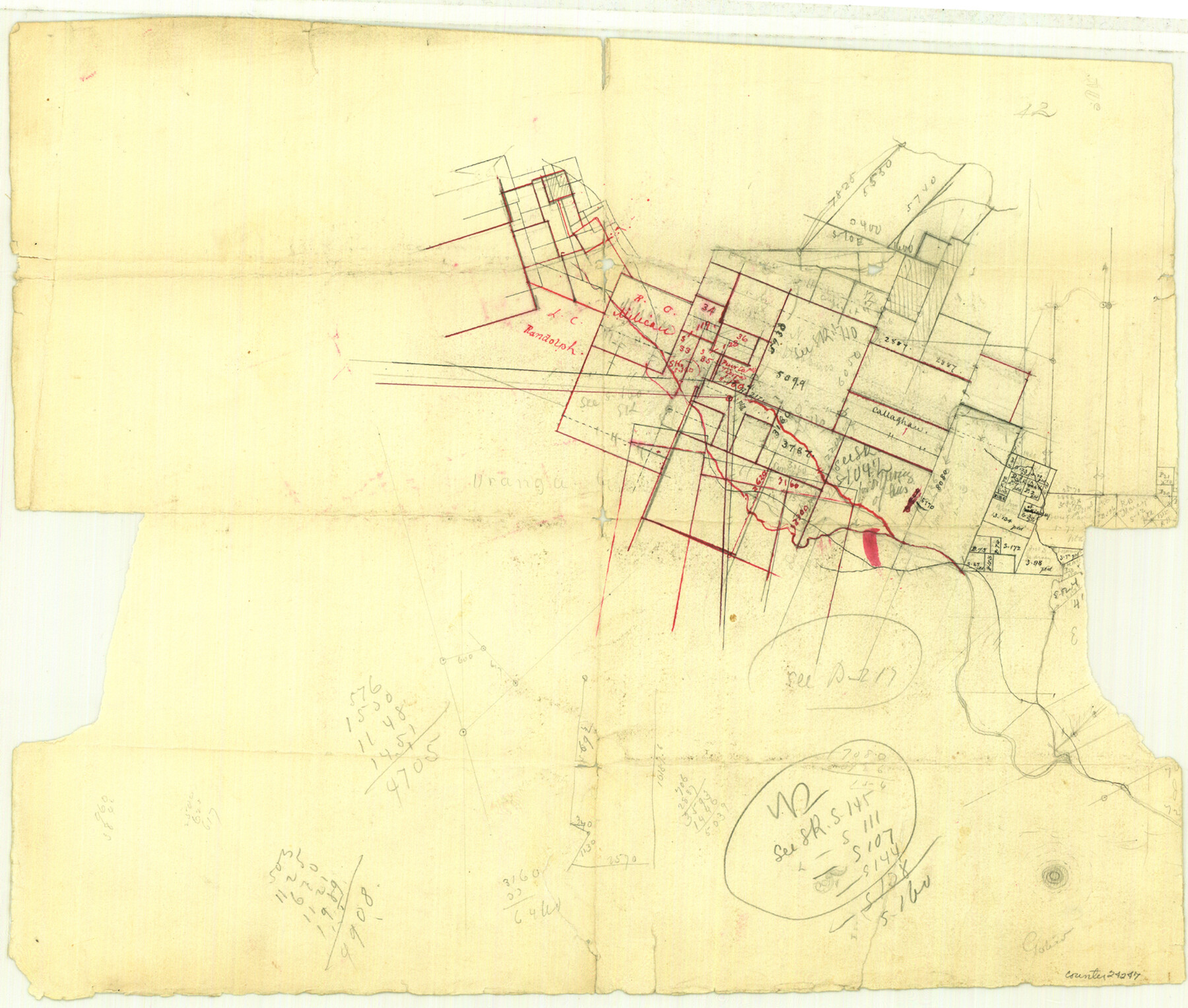Report on Chongqing’s Implementation of the Yangtze River Fishing Ban in Alignment with Sustainable Development Goals
1.0 Introduction: Addressing an Ecological Crisis through Sustainable Action
The Yangtze River, a critical artery of global biodiversity, has faced a severe ecological crisis due to unregulated development and destructive fishing practices. This degradation threatened hundreds of endemic species and resulted in the aquatic life integrity index reaching its lowest classification. In response, a comprehensive ten-year fishing ban was instituted, representing a monumental effort to restore the river’s health. This initiative directly addresses several United Nations Sustainable Development Goals (SDGs), primarily SDG 14 (Life Below Water) and SDG 15 (Life on Land), by focusing on the conservation and restoration of freshwater ecosystems and halting biodiversity loss.
On July 7, Chongqing Municipality convened a meeting to evaluate the progress of this ban and introduced a new 2025–2027 Action Plan, reinforcing its commitment to these global sustainability targets.
2.0 National Policy and Institutional Framework: A Commitment to SDG 16
The Chinese government’s response to the Yangtze’s ecological decline demonstrates a strong commitment to SDG 16 (Peace, Justice and Strong Institutions). Key policy actions include:
- The Yangtze River Ten-Year Fishing Ban: Launched in late 2019, this policy prohibited commercial fishing, leading to the decommissioning of over 111,000 vessels.
- State Council Policy Directive (2024): Reaffirmed the national commitment to the long-term success of the ban.
- Government Work Report (2025): Premier Li Qiang identified the ban as a cornerstone project for biodiversity conservation, embedding it within national strategic priorities.
This robust legal and policy framework provides a vital recovery window for aquatic species, including the critically endangered Yangtze finless porpoise and Yangtze sturgeon, directly supporting the targets of SDG 14 and SDG 15.
3.0 Chongqing’s 2025–2027 Action Plan: An Integrated Approach to Sustainability
Chongqing’s new municipal Action Plan outlines 26 initiatives across seven core areas, creating a holistic strategy that balances environmental restoration with social equity.
- Supporting Resettled Fishermen: Ensuring a just transition in line with SDG 1 (No Poverty) and SDG 8 (Decent Work and Economic Growth).
- Combating Illegal Fishing: Strengthening law enforcement to protect aquatic resources.
- Enhancing Enforcement Capabilities: Building institutional capacity as per SDG 16.
- Developing Regulatory Infrastructure: Creating robust systems for long-term management.
- Restoring Aquatic Ecosystems: Direct action towards SDG 14 and SDG 15 through habitat and species recovery.
- Promoting Sustainable Fisheries: Planning for future responsible production models, aligning with SDG 12 (Responsible Consumption and Production).
- Fostering Public Participation: Engaging communities to build broad support for conservation efforts, a key principle of the SDG framework.
4.0 Progress and Measurable Outcomes
4.1 Socio-Economic Impact: Advancing SDG 1 and SDG 8
Chongqing has made significant strides in ensuring that conservation efforts do not compromise human well-being. By June 2025, the municipality had achieved:
- Full employment for all 6,443 registered former fishermen in need of work.
- Social insurance coverage for 10,315 eligible individuals.
These achievements exemplify a successful just transition, providing alternative livelihoods and social safety nets, which are core tenets of SDG 1 and SDG 8.
4.2 Ecological Recovery: Tangible Gains for SDG 14 and SDG 15
The initial phase of the ban has yielded positive ecological results:
- The biological integrity index of the Yangtze’s Chongqing section has improved by two levels from its lowest point.
- Sightings of rare and endemic fish, including the Chinese sturgeon and rock carp, have become more frequent.
- Criminal cases related to illegal fishing have decreased by 58.9% since 2020, indicating effective enforcement in line with SDG 16.
5.0 Future Commitments and Targets (2025-2027)
Chongqing’s action plan sets clear, time-bound targets to accelerate progress towards the SDGs.
By the end of 2025:
- Maintain a 100% employment rate for former fishermen seeking work.
- Achieve a 100% case resolution rate for illegal fishing incidents.
- Reduce illegal fishing cases by a further 5%.
- Increase the aquatic integrity index to a score of 58.
By the end of 2027:
- Further improve socio-economic support systems for former fishing communities.
- Increase the aquatic integrity index to 63, representing a full-level improvement from the current state.
Future actions will also focus on enhancing species rescue capabilities through partnerships with zoos and aquariums, a nod to SDG 17 (Partnerships for the Goals), and advancing artificial breeding programs to safeguard the future of the Yangtze’s unique biodiversity.
Analysis of Sustainable Development Goals in the Article
1. Which SDGs are addressed or connected to the issues highlighted in the article?
The article on the Yangtze River’s fishing ban addresses several Sustainable Development Goals (SDGs) by detailing a comprehensive approach that balances environmental conservation with socio-economic support.
- SDG 14: Life Below Water: Although primarily focused on marine ecosystems, its principles of conserving and sustainably using aquatic resources are central to the article. The Yangtze River, as a major aquatic system, faces issues like biodiversity loss and overfishing, which are core concerns of SDG 14.
- SDG 15: Life on Land: This goal is directly relevant as it includes the protection, restoration, and sustainable use of inland freshwater ecosystems. The article’s focus on restoring the Yangtze’s aquatic biodiversity, protecting endangered species like the finless porpoise, and improving the river’s biological integrity index aligns perfectly with this SDG.
- SDG 8: Decent Work and Economic Growth: The article highlights the socio-economic impact of the fishing ban on local communities. By detailing efforts to resettle, provide employment, and ensure social security for 231,000 fishermen, it directly connects to the goal of promoting full and productive employment and decent work for all.
- SDG 1: No Poverty: The provision of social insurance to 10,315 eligible individuals and the goal of achieving 100% employment for former fishermen are measures aimed at preventing poverty and providing a social safety net for a vulnerable group affected by the policy change.
- SDG 16: Peace, Justice and Strong Institutions: The article discusses the enforcement of the fishing ban, including a crackdown on illegal fishing activities. The mention of a significant decrease in fishing-related criminal cases and the establishment of clear enforcement targets reflects the strengthening of institutions and the rule of law to protect the environment.
2. What specific targets under those SDGs can be identified based on the article’s content?
Several specific SDG targets can be identified from the actions and policies described in the article.
- Under SDG 14 (Life Below Water) and SDG 15 (Life on Land):
- Target 14.4 / 15.7: “Effectively regulate harvesting and end overfishing, illegal, unreported and unregulated (IUU) fishing and destructive fishing practices” / “Take urgent action to end poaching…”. The decade-long ban on all commercial fishing is a direct measure to achieve this target by stopping destructive practices and allowing fish stocks to recover. The crackdown on illegal fishing, which led to a 58.9% decrease in criminal cases, is a clear action towards this target.
- Target 15.1: “By 2020, ensure the conservation, restoration and sustainable use of… inland freshwater ecosystems and their services…”. The entire initiative, including the 2025–2027 Action Plan, is focused on restoring the Yangtze’s aquatic ecosystem, which had previously been devastated.
- Target 15.5: “Take urgent and significant action to reduce the degradation of natural habitats, halt the loss of biodiversity and… protect and prevent the extinction of threatened species.” The article explicitly mentions that the ban aims to protect threatened species like the Yangtze sturgeon and the finless porpoise, whose population had dropped to 1,012. Ecological restoration efforts focus on rescuing these endangered species.
- Target 15.8: “By 2020, introduce measures to prevent the introduction and significantly reduce the impact of invasive alien species on… water ecosystems…”. The action plan includes specific measures for “curbing invasive species.”
- Under SDG 8 (Decent Work and Economic Growth):
- Target 8.5: “By 2030, achieve full and productive employment and decent work for all…”. The plan’s benchmark to achieve a “100% employment rate among fishermen willing to work” by the end of 2025 directly addresses this target for the affected population.
- Under SDG 1 (No Poverty):
- Target 1.3: “Implement nationally appropriate social protection systems and measures for all…”. The action to bring 10,315 eligible former fishermen under social insurance coverage is a direct implementation of a social protection system for a vulnerable group.
- Under SDG 16 (Peace, Justice and Strong Institutions):
- Target 16.3: “Promote the rule of law… and ensure equal access to justice…”. The special three-year campaign by the public security bureau to enforce the ban and the stated goal of a “100% case resolution rate” for illegal fishing demonstrate a commitment to strengthening the rule of law in environmental governance.
3. Are there any indicators mentioned or implied in the article that can be used to measure progress towards the identified targets?
Yes, the article provides several quantitative and qualitative indicators that can be used to measure progress.
- Indicator for Biodiversity and Ecosystem Health (SDG 14 & 15): The “aquatic life integrity index” or “biological integrity index” is a key indicator. The article notes it had plummeted to the lowest rating, has since risen two levels, and has specific future targets: reaching 58 by 2025 and 63 by 2027. The population count of the finless porpoise (1,012 in a 2018 survey) and the reported increased sightings of rare endemic fish also serve as indicators of biodiversity recovery.
- Indicator for Employment (SDG 8): The employment rate of former fishermen is a direct indicator. The article states that by June 2025, all 6,443 registered former fishermen in need of employment had been placed in jobs. The future benchmark is a “100% employment rate among fishermen willing to work.”
- Indicator for Social Protection (SDG 1): The number of people covered by social safety nets is a clear indicator. The article specifies that “10,315 eligible individuals were covered by social insurance.”
- Indicator for Law Enforcement (SDG 16): The number of criminal cases related to illegal fishing is used as an indicator of enforcement success. The article reports a drop from 1,395 cases in 2020 to 573 in 2024. Future targets include a further “5% decline” in illegal fishing cases and achieving a “100% case resolution rate.”
- Indicator for Ending Destructive Practices (SDG 14): The number of decommissioned fishing vessels (“over 111,000”) serves as an indicator of the scale of phasing out commercial fishing.
4. Table of SDGs, Targets, and Indicators
| SDGs | Targets | Indicators |
|---|---|---|
| SDG 14: Life Below Water & SDG 15: Life on Land |
14.4 / 15.7: End overfishing and illegal/destructive fishing practices. 15.1: Ensure conservation and restoration of inland freshwater ecosystems. 15.5: Halt biodiversity loss and protect threatened species. 15.8: Reduce the impact of invasive species. |
– Aquatic/biological integrity index (Target: 58 by 2025, 63 by 2027). – Population of finless porpoise (1,012 in 2018). – Number of decommissioned fishing vessels (111,000). – Increased sightings of rare fish (e.g., Chinese sturgeon). – Measures to curb invasive species included in the action plan. |
| SDG 8: Decent Work and Economic Growth | 8.5: Achieve full and productive employment and decent work. |
– Number of resettled fishermen provided with jobs (6,443). – Employment rate for former fishermen (Target: 100% for those willing to work). |
| SDG 1: No Poverty | 1.3: Implement social protection systems for the poor and vulnerable. | – Number of former fishermen covered by social insurance (10,315). |
| SDG 16: Peace, Justice and Strong Institutions | 16.3: Promote the rule of law. |
– Number of criminal cases for illegal harvesting (decreased from 1,395 to 573). – Percentage decline in illegal fishing cases (Target: 5% by 2025). – Case resolution rate (Target: 100%). |
Source: ichongqing.info







